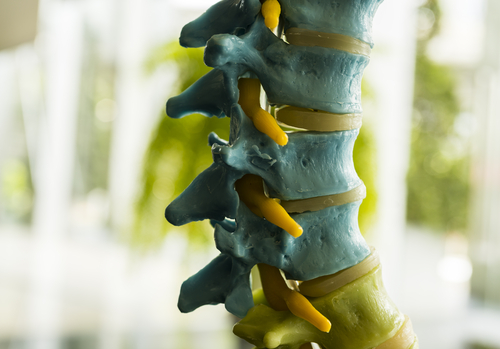
Conditions We Treat
Facet Joint Syndrome

Unpredicatable
pain, sometimes scattered over a few months?
Soreness
to the touch where the pain is felt?
Pain
when bending backwards?
If you answered ‘yes’ then you may have facet joint syndrome

Isolated Back Strengthening
What is facet joint syndrome?
Facet joints are the bony protrusions at the back of the spine which join the vertebrae together.
They are the joints that make your back flexible and allow you to bend and twist.
The joints are lined with cartilage and lubricated by a substance called synovial fluid. When healthy, the bones move freely over each other without grinding.
Nerves pass through the joints from the spinal cord to on their way to the rest of the body.
Degenerative changes in the discs and subsequent thinning of discs can cause pressure on the facet joints, affecting how the joints line up.
This added pressure causes wear and tear which eventually destroys the cartilage and fluid in the joint and causes the soft tissue surrounding the joint to swell.
As a result of this damage, the bones rub together. When this happens, the body tries to heal itself by building new bone which results in the formation of bone spurs, growths which protrude from the bone and can press on the nerves which pass through the joint.
There is an added risk that these bone spurs continue to grow and narrow the spinal canal.
When suffering from facet joint syndrome, movements such as bending backwards or twisting sideways towards the affected joint will cause pain.
Standing for long periods may make it worse and anything which takes the weight off the joint such as sitting or lying
Symptoms can include:
-
Unpredictable pain, possibly scattered over a few months
-
Soreness when pressing on the area where pain is felt
-
Pain when leaning backwards
-
Pain when sitting for long periods
Facet Joint Syndrome Treatment
As part of your treatment at Core Strength Studios, you will exercise to strengthen the back and core muscles.
By working on the supporting muscles, your joints will be under less pressure, reducing your pain, increasing your function and helping you return to the activities you’ve had to stop because of your back. Massage will also be included in your programme to help ease tension in the muscles.
You will also work on exercises to help improve your posture to maintain the natural ‘s’ shape of your spine. This, combined with the increase in strength you achieve will help prevent back pain long-term.
To speak to a specialist therapist about the prevention and treatment of facet joint syndrome, click here to claim your complimentary ‘reduce back pain’ consultation, where you can discuss your back pain and receive advice on safe treatment for facet joint syndrome to avoid pain long-term.